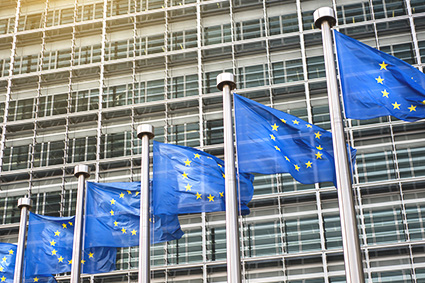The Overarching Narrative
US reopening already priced in
Various regions are at different points of the economic cycle, with the US economy ahead of others. While there are still opportunities in US equities, upside may be limited given expensive valuations. Amid high downside risks, investors will need to be extremely selective as optimism over US reopening has likely been fully priced in.
Time for Europe and Asia ex-Japan equities to shine
European and Asia ex-Japan equities have a longer runway to ride on the recovery theme. This is because they have less expensive valuations than their US peers (Figure C12) and are just starting to recover and are further behind in the economic cycle. Therefore, they offer a strong catch-up play for investors. In this section, we will focus more on European equities. You can read more about Asia ex-Japan equities here.
Figure C12. Europe and Asia ex-Japan equities are trading at lower valuations than US equities.
Source: Bloomberg (30 November 2021).
European Equities to Ride on Better Growth Prospects

Growth to speed up
Although Europe has relatively-high vaccination rates, it has remained behind the curve in reopening. This will change in 2022 as it is poised to maintain its above-trend growth rate. Pent-up demand and easing supply chain constraints should drive a recovery in industrial output, one of the region’s largest growth contributors. The disbursement of the EUR750 billion Next Generation European Union (NGEU) Fund and the European Union’s long-term budgets will support the region’s overall growth (Figure C13).
Figure C13. The EU’s long-term budget and NGEU funds will continue to support European GDP growth over the next 2 years.


Source: Eurostat, Goldman Sachs Global Investment Research.
EU-backed recovery to drive sustainability
Backloaded disbursements from the NGEU Fund will finally be handed out in 2022. This will finance sustainable projects and better prepare EU economies for global green and digital transitions. The large fiscal package will be funded by the issuance of EU bonds, with risks collectively shared amongst all EU members to keep the borrowing cost low.
Spotlight on growth-oriented sectors
The equity market is no longer concentrated on low-growth, old-economy sectors such as energy and banking. Europe’s benchmark index makeover now captures a greater representation from sectors including Luxury Goods, Financial Technology (Fintech), Medical Technology (MedTech) and Renewable Energy.
European companies are now more exposed to global growth opportunities, with STOXX Europe 600 companies deriving a greater percentage of revenue from Asia amid a declining contribution from Europe (Figure C14).
Therefore, look for growth-oriented companies and sectors such as Technology, Healthcare and Renewable Energy. Financials are also well-placed to make gains given good capital ratios and reasonable valuations.
Figure C14. European companies are deriving more revenue from growth regions like Asia Pacific and lesser from Europe.


Source: FactSet, Goldman Sachs Global Investment Research.
Monetary policy remains supportive
Interest rates should remain low as the European Central Bank diverges from the Fed by sticking to quantitative easing. The pandemic emergency purchase program (PEPP) is likely to remain in place at least until March 2022, keeping liquidity abundant.
Inflation kept in check
Parts of inflation risks may be contained as supply chain bottlenecks ease, which will support growth. Prices are likely to rise at a “just right” pace that is neither too hot nor cold.
Attractive valuations
With cheaper valuations (Figure C15), European equities are more attractive than their US counterparts. In a global portfolio, this offers a diversification opportunity for investors where they can boost their allocation of European equities and reduce exposure to US equities.
Figure C15. European equities are at cheaper valuations than US equities.


Source: Bloomberg (30 November 2021).
Risks of an energy crisis
European equities are exposed to energy shortages. Expansionary fiscal policies which boost energy demand, coupled with green initiatives that constrain supply, will keep energy prices sticky and elevated. This can potentially disrupt economic activity.






